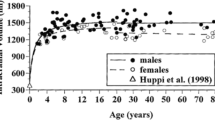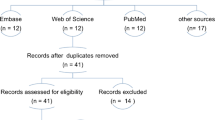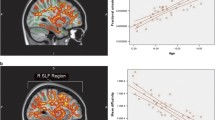Abstract
Brain development during childhood and early adolescence is characterized by global changes in brain architecture. Neuroimaging studies have revealed overall decreases in cortical thickness (CT) and increases in fractional anisotropy (FA). Furthermore, previous studies have shown that certain cortical regions display coordinated growth during development. However, there is significant heterogeneity in the timing and speed of these developmental transformations, and it is still unclear whether white and grey matter changes are co-localized. In this multimodal neuroimaging study, we investigated the relationship between grey and white matter developmental changes and asynchronous maturation within brain regions in 249 normally developing children between the ages 7–14. We used structural magnetic resonance imaging (MRI) and diffusion tensor imaging (DTI) to analyze CT and FA, respectively, as well as their covariance across development. Consistent with previous studies, we observed overall cortical thinning with age, which was accompanied by increased FA. We then compared the coordinated development of grey and white matter as indexed by covariance measures. Covariance between grey matter regions and the microstructure of white matter tracts connecting those regions were highly similar, suggesting that coordinated changes in the cortex were mirrored by coordinated changes in their respective tracts. Examining within-brain divergent trajectories, we found significant structural decoupling (decreased covariance) between several brain regions and tracts in the 9- to 11-year-old group, particularly involving the forceps minor and the regions that it connects to. We argue that this decoupling could reflect a developmental pattern within the prefrontal region in 9- and 11-year-old children, possibly related to the significant changes in cognitive control observed at this age.




Similar content being viewed by others
References
Abe, O., Masutani, Y., Aoki, S., Yamasue, H., Yamada, H., Kasai, K., et al. (2004). Topography of the human corpus callosum using diffusion tensor tractography. J Comp Assist Tomogr, 28(4), 533–539.
Alexander-Bloch, A., Raznahan, A., Bullmore, E., & Giedd, J. (2013a). The convergence of maturational change and structural covariance in human cortical networks. The Journal of Neuroscience, 33(7), 2889–2899. doi:10.1523/JNEUROSCI.3554-12.2013.
Alexander-Bloch, A. F., Vértes, P. E., Stidd, R., Lalonde, F., Clasen, L., Rapoport, J., et al. (2013b). The anatomical distance of functional connections predicts brain network topology in health and schizophrenia. Cereb Cortex. doi:10.1093/cercor/bhr388.
Badre, D., & D’Esposito, M. (2009). Is the rostro-caudal axis of the frontal lobe hierarchical? Nature Reviews. Neuroscience, 10(9), 659–669.
Bava, S., Thayer, R., Jacobus, J., Ward, M., Jernigan, T. L., & Tapert, S. F. (2010). Longitudinal characterization of white matter maturation during adolescence. Brain Research, 1327, 38–46. doi:10.1016/j.brainres.2010.02.066.
Bernal-Rusiel, J. L., Atienza, M., & Cantero, J. L. (2010). Determining the optimal level of smoothing in cortical thickness analysis: a hierarchical approach based on sequential statistical thresholding. NeuroImage, 52(1), 158–171.
Blakemore, S. J. (2012). Imaging brain development: the adolescent brain. NeuroImage, 61(2), 397–406. doi:10.1016/j.neuroimage.2011.11.080.
Chao, Y. P., Cho, K. H., Yeh, C. H., Chou, K. H., Chen, J. H., & Lin, C. P. (2009). Probabilistic topography of human corpus callosum using cytoarchitectural parcellation and high angular resolution diffusion imaging tractography. Human Brain Mapping, 30(10), 3172–3187.
Desikan, R. S., Segonne, F., Fischl, B., Quinn, B. T., Dickerson, B. C., Blacker, D., et al. (2006). An automated labeling system for subdividing the human cerebral cortex on MRI scans into gyral based regions of interest. NeuroImage, 31(3), 968–980. doi:10.1016/j.neuroimage.2006.01.021.
Dumontheil, I., Burgess, P. W., & Blakemore, S. J. (2008). Development of rostral prefrontal cortex and cognitive and behavioural disorders. Developmental Medicine and Child Neurology, 50(3), 168–181.
Figueiredo, V. L. M. (2001). Uma adaptação brasileira do teste de inteligência WISC-III. (Doutorado), Universidade Federal de Brasília, Brasília
Fischl, B., & Dale, A. M. (2000). Measuring the thickness of the human cerebral cortex from magnetic resonance images. Proceedings of the National Academy of Sciences of the United States of America, 97(20), 11050–11055. doi:10.1073/pnas.200033797.
Giedd, J. N. (2004). Structural magnetic resonance imaging of the adolescent brain. Annals of the New York Academy of Sciences, 1021, 77–85. doi:10.1196/annals.1308.009.
Giedd, J. N., & Rapoport, J. L. (2010). Structural MRI of pediatric brain development: what have we learned and where are we going? Neuron, 67(5), 728–734. doi:10.1016/j.neuron.2010.08.040.
Giorgio, A., Watkins, K., Douaud, G., James, A., James, S., De Stefano, N., et al. (2008). Changes in white matter microstructure during adolescence. NeuroImage, 39(1), 52–61.
Gogtay, N., Giedd, J. N., Lusk, L., Hayashi, K. M., Greenstein, D., Vaituzis, A. C., et al. (2004). Dynamic mapping of human cortical development during childhood through early adulthood. Proceedings of the National Academy of Sciences of the United States of America, 101(21), 8174–8179. doi:10.1073/pnas.0402680101.
Gong, G., He, Y., Chen, Z. J., & Evans, A. C. (2012). Convergence and divergence of thickness correlations with diffusion connections across the human cerebral cortex. NeuroImage, 59(2), 1239–1248.
Goodman, R., Ford, T., Richards, H., Gatward, R., & Meltzer, H. (2000). The development and well-being assessment: description and initial validation of an integrated assessment of child and adolescent psychopathology. Journal of Child Psychology and Psychiatry, 41(5), 645–655.
Gutman, D. A., Holtzheimer, P. E., Behrens, T. E., Johansen-Berg, H., & Mayberg, H. S. (2009). A tractography analysis of two deep brain stimulation white matter targets for depression. Biological Psychiatry, 65(4), 276–282.
Hayasaka, S., Phan, K. L., Liberzon, I., Worsley, K. J., & Nichols, T. E. (2004). Nonstationary cluster-size inference with random field and permutation methods. NeuroImage, 22(2), 676–687.
Hua, K., Zhang, J., Wakana, S., Jiang, H., Li, X., Reich, D. S., et al. (2008). Tract probability maps in stereotaxic spaces: analyses of white matter anatomy and tract-specific quantification. NeuroImage, 39(1), 336–347.
Hua, K., Oishi, K., Zhang, J., Wakana, S., Yoshioka, T., Zhang, W., et al. (2009). Mapping of functional areas in the human cortex based on connectivity through association fibers. Cerebral Cortex, 19(8), 1889–1895.
Johansen-Berg, H., & Behrens, T. E. (2014). Diffusion MRI: From quantitative measurement to in-vivo neuroanatomy (Second ed.). Amsterdam: Academic Press.
Jones, D. K., & Cercignani, M. (2010). Twenty-five pitfalls in the analysis of diffusion MRI data. NMR in Biomedicine, 23(7), 803–820.
Jones, D. K., Knosche, T. R., & Turner, R. (2013). White matter integrity, fiber count, and other fallacies: the do’s and don’ts of diffusion MRI. NeuroImage, 73, 239–254. doi:10.1016/j.neuroimage.2012.06.081.
Lebel, C., & Beaulieu, C. (2011). Longitudinal development of human brain wiring continues from childhood into adulthood. The Journal of Neuroscience, 31(30), 10937–10947. doi:10.1523/JNEUROSCI.5302-10.2011.
Lebel, C., Walker, L., Leemans, A., Phillips, L., & Beaulieu, C. (2008). Microstructural maturation of the human brain from childhood to adulthood. NeuroImage, 40(3), 1044–1055. doi:10.1016/j.neuroimage.2007.12.053.
Marsh, R., Gerber, A. J., & Peterson, B. S. (2008). Neuroimaging studies of normal brain development and their relevance for understanding childhood neuropsychiatric disorders. Journal of the American Academy of Child and Adolescent Psychiatry, 47(11), 1233–1251.
Mechelli, A., Friston, K. J., Frackowiak, R. S., & Price, C. J. (2005). Structural covariance in the human cortex. The Journal of Neuroscience, 25(36), 8303–8310. doi:10.1523/JNEUROSCI.0357-05.2005.
Mori, S., Oishi, K., Jiang, H., Jiang, L., Li, X., Akhter, K., et al. (2008). Stereotaxic white matter atlas based on diffusion tensor imaging in an ICBM template. NeuroImage, 40(2), 570–582.
Park, H. J., Kim, J. J., Lee, S. K., Seok, J. H., Chun, J., Kim, D. I., et al. (2008). Corpus callosal connection mapping using cortical gray matter parcellation and DT-MRI. Human Brain Mapping, 29(5), 503–516.
Paus, T. (2005). Mapping brain maturation and cognitive development during adolescence. Trends in Cognitive Sciences, 9(2), 60–68.
Paus, T. (2010). Growth of white matter in the adolescent brain: myelin or axon? Brain and Cognition, 72(1), 26–35.
Paus, T., Collins, D., Evans, A., Leonard, G., Pike, B., & Zijdenbos, A. (2001). Maturation of white matter in the human brain: a review of magnetic resonance studies. Brain Research Bulletin, 54(3), 255–266.
Paus, T., Keshavan, M., & Giedd, J. N. (2008). Why do many psychiatric disorders emerge during adolescence? Nature Reviews. Neuroscience, 9(12), 947–957. doi:10.1038/nrn2513.
Peper, J. S., Schnack, H. G., Brouwer, R. M., Van Baal, G. C., Pjetri, E., Szekely, E., et al. (2009). Heritability of regional and global brain structure at the onset of puberty: a magnetic resonance imaging study in 9-year-old twin pairs. Human Brain Mapping, 30(7), 2184–2196. doi:10.1002/hbm.20660.
Peters, B. D., Szeszko, P. R., Radua, J., Ikuta, T., Gruner, P., DeRosse, P., et al. (2012). White matter development in adolescence: diffusion tensor imaging and meta-analytic results. Schizophrenia Bulletin, 38(6), 1308–1317. doi:10.1093/schbul/sbs054.
Power, J. D., Barnes, K. A., Snyder, A. Z., Schlaggar, B. L., & Petersen, S. E. (2012). Spurious but systematic correlations in functional connectivity MRI networks arise from subject motion. NeuroImage, 59(3), 2142–2154.
Ramnani, N., & Owen, A. M. (2004). Anterior prefrontal cortex: insights into function from anatomy and neuroimaging. Nature Reviews. Neuroscience, 5(3), 184–194.
Raznahan, A., Lerch, J. P., Lee, N., Greenstein, D., Wallace, G. L., Stockman, M., et al. (2011). Patterns of coordinated anatomical change in human cortical development: a longitudinal neuroimaging study of maturational coupling. Neuron, 72(5), 873–884. doi:10.1016/j.neuron.2011.09.028.
Salum, G. A., Gadelha, A., Pan, P. M., Moriyama, T. S., Graeff-Martins, A. S., Tamanaha, A. C., et al. (2014). High risk cohort study for psychiatric disorders in childhood: rationale, design, methods and preliminary results. Int J Method Psychiatr Res, 24(1), 58–73. doi:10.1002/mpr.1459.
Schmithorst, V. J., & Yuan, W. (2010). White matter development during adolescence as shown by diffusion MRI. Brain and Cognition, 72(1), 16–25. doi:10.1016/j.bandc.2009.06.005.
Shaw, P., Kabani, N. J., Lerch, J. P., Eckstrand, K., Lenroot, R., Gogtay, N., et al. (2008). Neurodevelopmental trajectories of the human cerebral cortex. The Journal of Neuroscience, 28(14), 3586–3594. doi:10.1523/JNEUROSCI.5309-07.2008.
Smith, S. M., & Nichols, T. E. (2009). Threshold-free cluster enhancement: addressing problems of smoothing, threshold dependence and localisation in cluster inference. NeuroImage, 44(1), 83–98. doi:10.1016/j.neuroimage.2008.03.061.
Smith, S. M., Jenkinson, M., Johansen-Berg, H., Rueckert, D., Nichols, T. E., Mackay, C. E., et al. (2006). Tract-based spatial statistics: voxelwise analysis of multi-subject diffusion data. NeuroImage, 31(4), 1487–1505. doi:10.1016/j.neuroimage.2006.02.024.
Sowell, E. R., Peterson, B. S., Thompson, P. M., Welcome, S. E., Henkenius, A. L., & Toga, A. W. (2003). Mapping cortical change across the human life span. Nature Neurosciscience, 6(3), 309–315. doi:10.1038/nn1008.
Sowell, E. R., Thompson, P. M., Leonard, C. M., Welcome, S. E., Kan, E., & Toga, A. W. (2004). Longitudinal mapping of cortical thickness and brain growth in normal children. The Journal of Neuroscience, 24(38), 8223–8231. doi:10.1523/JNEUROSCI.1798-04.2004.
Takahashi, M., Hackney, D. B., Zhang, G., Wehrli, S. L., Wright, A. C., O’Brien, W. T., et al. (2002). Magnetic resonance microimaging of intraaxonal water diffusion in live excised lamprey spinal cord. Proceedings of the National Academy of Sciences of the United States of America, 99(25), 16192–16196. doi:10.1073/pnas.252249999.
Tamnes, C. K., Ostby, Y., Fjell, A. M., Westlye, L. T., Due-Tonnessen, P., & Walhovd, K. B. (2010). Brain maturation in adolescence and young adulthood: regional age-related changes in cortical thickness and white matter volume and microstructure. Cerebral Cortex, 20(3), 534–548. doi:10.1093/cercor/bhp118.
Tau, G. Z., & Peterson, B. S. (2010). Normal development of brain circuits. Neuropsychopharmacology, 35(1), 147–168. doi:10.1038/npp.2009.115.
Theys, C., Wouters, J., & Ghesquiere, P. (2014). Diffusion tensor imaging and resting-state functional MRI-scanning in 5-and 6-year-old children: training protocol and motion assessment. PloS One, 9(4), e94019.
Tomlinson, M., Rudan, I., Saxena, S., Swartz, L., Tsai, A. C., & Patel, V. (2009). Setting priorities for global mental health research. Bulletin of the World Health Organization, 87(6), 438–446.
Tsujimoto, S., Genovesio, A., & Wise, S. P. (2010). Evaluating self-generated decisions in frontal pole cortex of monkeys. Nature Neuroscience, 13(1), 120–126.
Wallis, J. D. (2010). Polar exploration. Nature Neuroscience, 13(1), 7–8.
Wechsler, D. (2002). WISC-III: Escala de inteligência Wechsler Para crianças: Manual. São Paulo: Casa do Psicólogo.
Westlye, L. T., Walhovd, K. B., Dale, A. M., Bjørnerud, A., Due-Tønnessen, P., Engvig, A., et al. (2009). Life-span changes of the human brain white matter: diffusion tensor imaging (DTI) and volumetry. Cerebral Cortex, 2055–2068.
Yendiki, A., Koldewyn, K., Kakunoori, S., Kanwisher, N., & Fischl, B. (2014). Spurious group differences due to head motion in a diffusion MRI study. NeuroImage, 88, 79–90.
Yurgelun-Todd, D. (2007). Emotional and cognitive changes during adolescence. Current Opinion in Neurobiology, 17(2), 251–257.
Zielinski, B. A., Gennatas, E. D., Zhou, J., & Seeley, W. W. (2010). Network-level structural covariance in the developing brain. Proceedings of the National Academy of Sciences of the United States of America, 107(42), 18191–18196. doi:10.1073/pnas.1003109107.
Acknowledgments
The opinions, hypotheses, conclusions, and recommendations of this study are the responsibilities of the authors and are not necessarily representative of the opinions of the funding agencies. The authors are grateful to the CAPES Foundation for the fellowship (Moura, L.M. 17930/12-0), the Sao Paulo Research Foundation–FAPESP (Sato, J.R. grant nos. 2013/ 10498-6 and 2013/00506-1 and Jackowski, A.P. grant no. 2013/08531-5), and CNPq, Brazil for funding this research. This study is from the National Institutes of Science and Technology for Developmental Psychiatry of Children and Adolescents (INPD) and is supported by CNPq (573974/2008-0) and FAPESP (2008/ 57896-8).
Author information
Authors and Affiliations
Corresponding author
Ethics declarations
Conflict of interest
On behalf of all authors, the corresponding author states that there is no conflict of interest.
Ethics statement
The ethics committee at the University of Sao Paulo (Sao Paulo, Brazil) approved the study procedures (IORG0004884, 1138/08) and have therefore been performed in accordance with ethical standards laid down in the 1964 Declaration of Helsinki and its later amendments. Written informed consent was obtained from all parents, and all children provided verbal (or if possible, written) assent.
Rights and permissions
About this article
Cite this article
Moura, L.M., Crossley, N.A., Zugman, A. et al. Coordinated brain development: exploring the synchrony between changes in grey and white matter during childhood maturation. Brain Imaging and Behavior 11, 808–817 (2017). https://doi.org/10.1007/s11682-016-9555-0
Published:
Issue Date:
DOI: https://doi.org/10.1007/s11682-016-9555-0




